There are a great many battery chargers on the market today. Most of them perform in similar ways, however, while testing out the Opus BT-C3100 charger, I found several unique differences.

Opus BT-C3100 charger
Let’s Talk Basics
Opus’ BT-C3100 is a multifunctional charger that will safely and effectively charge all your
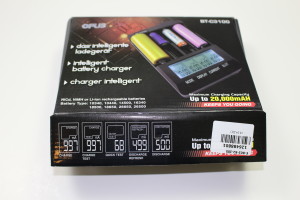
The Box
Lithium-ion, Nickel Metal Hydride and Nickel Cadmium batteries. Keep in mind they must be rechargeable batteries in the first place.
Among the acceptable battery sizes, are 16340, 10440, 14500, 18500, 18350, 18650. 26650 and 26500.
If you’re pretty average like me, you probably have no more than about four different size batteries in your collection. But just to know that should you ever decide to expand on the sizes you have, the Opus charger can handle them.
As you can see the image of the packaging, the Opus comes with everything you’ll need. Except batteries of course!
Here’s What It Does
Now, since I already own a few chargers, and began my collection with an NiMH-only charger a few years ago, the functions of the Opus were quite familiar. I actually found it quite intuitive. While it charges the two main types of rechargeable cells…its functions are closer to those that charge only NiMH batteries. At least this was MY interpretation.
If this is going to be your first venture into professional battery charging, then they’ll be a bit of a learning curve.
Having said that, once you read what it does, it’s not hard to learn in the slightest.
So, you place one to four batteries into the slots, and presto! the lighted display begins to hum. If you’d like to let the Opus decide everything for you, then the learning curve is moot! The display will flash for 6 seconds allowing you to make your own choices. If you’d prefer not to, then the default charging mode will take over.
Options Galore
With the BT-C3100, pressing and holding the mode button will permit you to select different functions. You can Charge, Discharge, Discharge & Refresh, Test, perform a Quick Test, or Refresh your batteries.
The slot button will toggle between the active slots. Once you’ve selected the desired cell, press the display button to toggle through the real-time information of that cell.
Alternatively, the display button can be used all by itself. Pressing it while cells are charging will toggle through the same information for all cells at once! Very handy!
The current button is used to select how much current (measured in mA’s) you’d like the cells to receive. Your choices are as follows;
- 200
- 300
- 500
- 700
- 1000
- 1500*
- 2000*
* These two “currents” can only be selected if slots one and/or four are used.
I found these higher currents to be quite impressive, given the fact that my first charger would only go as high as 700mA.
Each charging bay works independently. This means that a different mode AND charging current can be selected for EACH one!! Pretty amazing!
Here are a few photos showing the display with different modes selected. Each image may be clicked for a full-size view.
The Informational Display
The display on the BT-C3100 is nothing short of great! With each press of the display button, you’ll see the following;
- The current voltage of all cells (or the selected one)
- The elapsed time of the charge
- The amount of current (mA) being put INTO the battery
- The total mAh that the battery has received thus far
More Useful Features
When charging is complete, “full” is displayed below the corresponding battery. For NiMH cells, the Opus enters a “trickle charge” mode until the battery is removed. For lithium cells, the charge terminates immediately, and does NOT trickle charge. If a lithium battery is left in the slot and the voltage drops below 4.12 another charge will initiate until the battery reaches capacity again.
Once the charge is complete, repeatedly pressing the display button will toggle through total time of the charge, total mAh supplied to the battery, ending voltage and amount of mA currently entering the battery (but only as a result of the cell remaing on the charger and losing voltage).
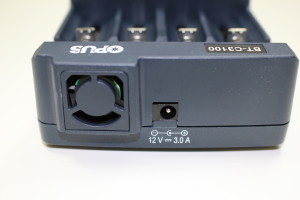
The cooling fan and AC port
Another useful plus, is a tiny fan located on the rear of the charger. If the unit’s temperature rises above a preset limit, the fan will turn on. It will switch off once the sensors detect that the temperature has dropped.
Do I like the BT-C3100 Charger?
You bet!! The many functions have proven its usefulness in several ways.
I appreciate the large easy to read display, and the fact that different functions can be handled separately per slot.
The range of power input is something I’ve not seen before. Charging larger batteries such as a 18650, can be done quicker by selecting a much higher current than is often found on other chargers.
If you decide to give the Opus a chance, I don’t think you’ll be disappointed.
The Opus BT-C3100 V2.2 battery charger can be yours by clicking here!
Looking to buy from Amazon? – Then click here!





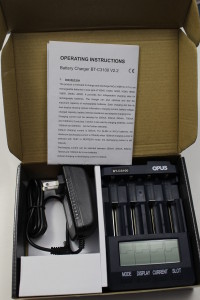
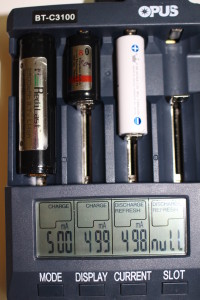
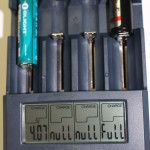


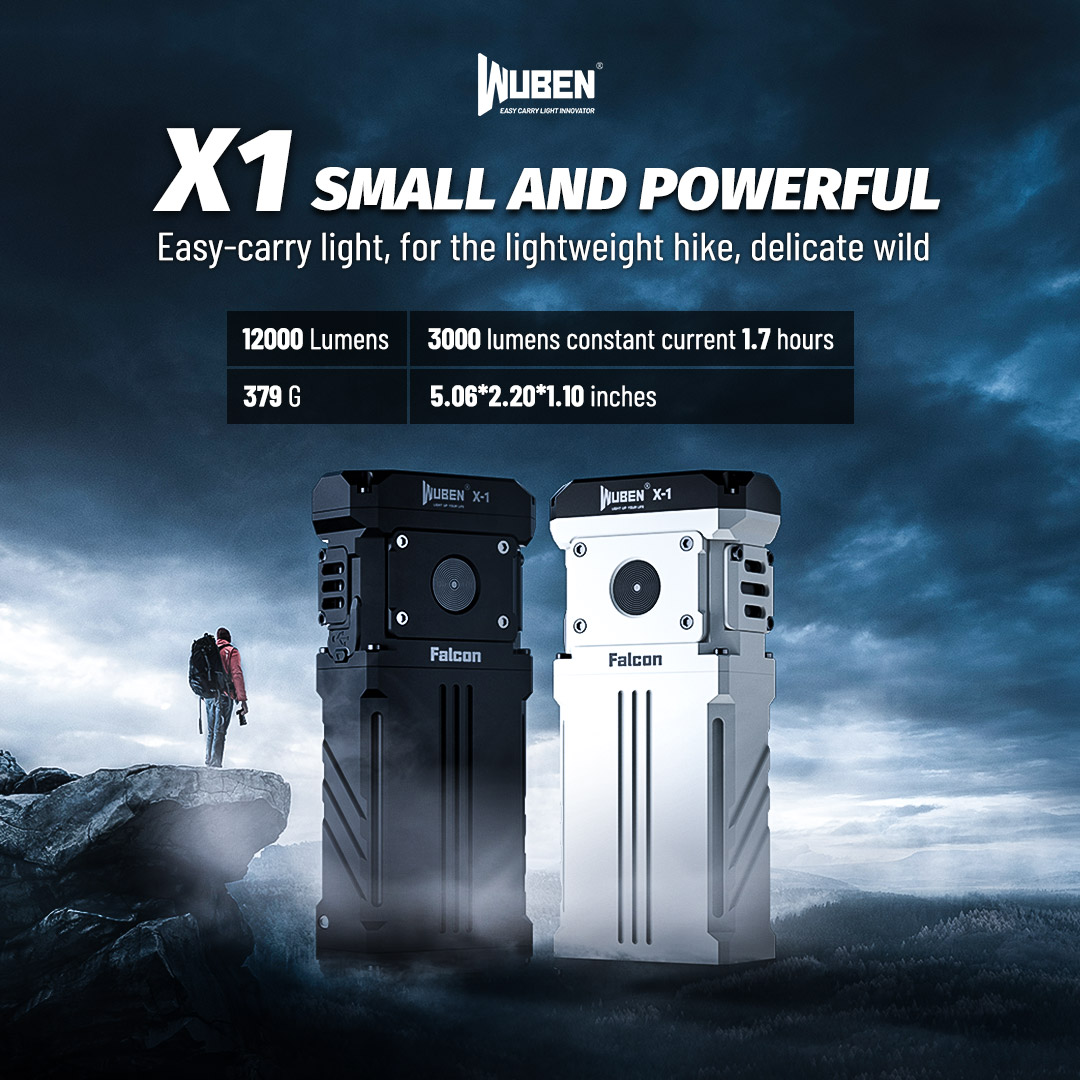
Hi, thanks for sharing this information. Very informative. If I ever decide I need a battery charger, I know where to look now, thanks.
Super cool David! Thanks.
Great review, thank you much! The Opus BT C3100 battery charger is a must for those who are sick of consistently buying new batteries! I’ve had a few chargers myself but all have died within a years time. This looks like a genuine deal, thanks!
I’m glad you enjoyed it Joshua! Yes, the Opus is a quality charger.
Hi: I just got one of these opus 3100 v2.2 chargers. When in charge- test mode, I set the current to 700 mA and during the initial charge, the mAh display is blank and the current shows 700 mA. During the discharge portion of the test, the current again shows 700 mA. My questions are:
1- Shouldn’t the discharge current be 350mA – half of the charging current as stated in the instructions?
2- During the initial charge portion of the charge test cycle, is it normal not to see any numbers (just dashes appear) in the display?
Hi John,
Not to worry! I’ve been duplicating your test, and my results are the same. The 700mA is used for both charge and discharge. It won’t show total mAh until the whole process is finished. That’s why it’s showing dashes for the time being.
Thanks for the question.
I am quite intelligent with a measured IQ of 118. However, being an accomplished artist I am right-brained and will readily allow that “techy” shit totally eludes me, especially when explained by nerds who assume too much of the ordinary layman in this or that field.
I bought the BT-C3100 because I have a hearing problem and use Sony headphones to view the Android TV and make life easier on the wife.
I, for instance, wouldn’t tell a novice student to grab a fan brush and “tap” in the foliage with three obscure shades of fall colors. Effectively, this is all we ever get on these “advice” sites – even on YouTube where of all websites they should be automatically assuming they’re instructing rank newbies. But no, if they’re explaining the nature of gases, they go off like we’re all chemists or attending a graduate seminar.
So I beg to differ that this item is in any way intuitive to use unless you’re a battery nerd. In the instructions or anywhere else will they should all tell y-us just what all the different functions mean in plain language – IOW, what they do, when to use them, why to use this or that setting and how to use them effectively.
This thing has me totally stymied and I now just set 1100 EBL’s to charge and hope for the best, not having a clue as to whether I am missing a shitload of info on what I am doing.
Forgive the strident tone, but I have to tell you I have been all over the internet and absolutely cannot use this thing as effectively as it CAN be used,
Hi Jamie,
I’m sorry you’ve been stymied by the charger! And please forgive my nerdy review. The very reason I started this website was to hopefully assist readers like you gain a better a understand of some of this “techy” gear.
So, that being said is there anything about it I can try to clear up for you? I’ll be glad to help where I can.
Thanks!
Ben
P.S… so are you saying Bob Ross’ method of “tapping” a tree together isn’t solid? (It always looked easy when he did it!)